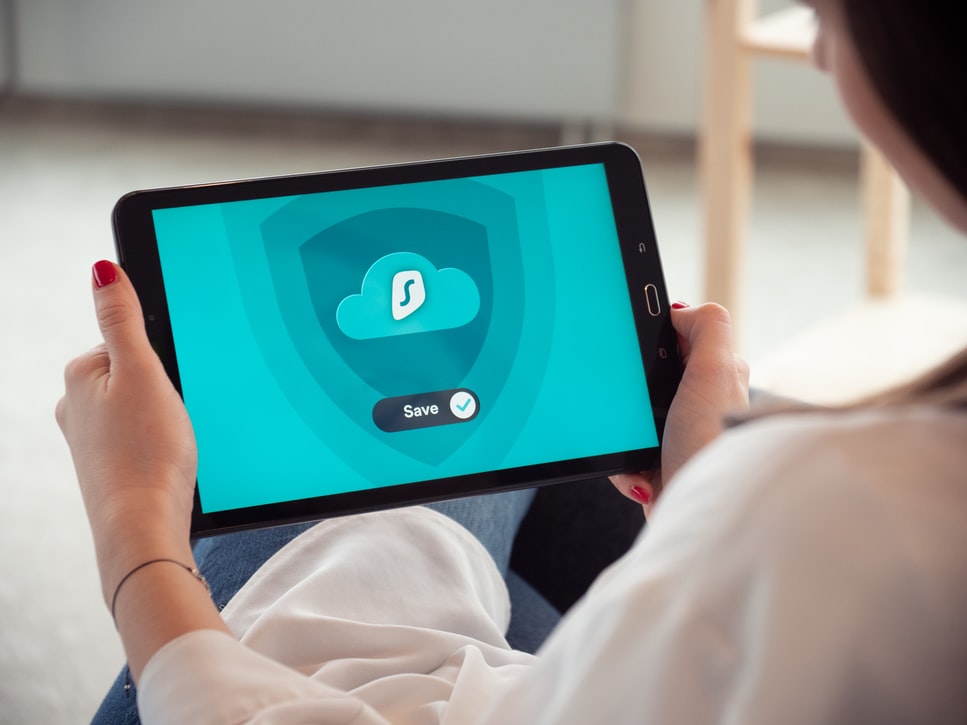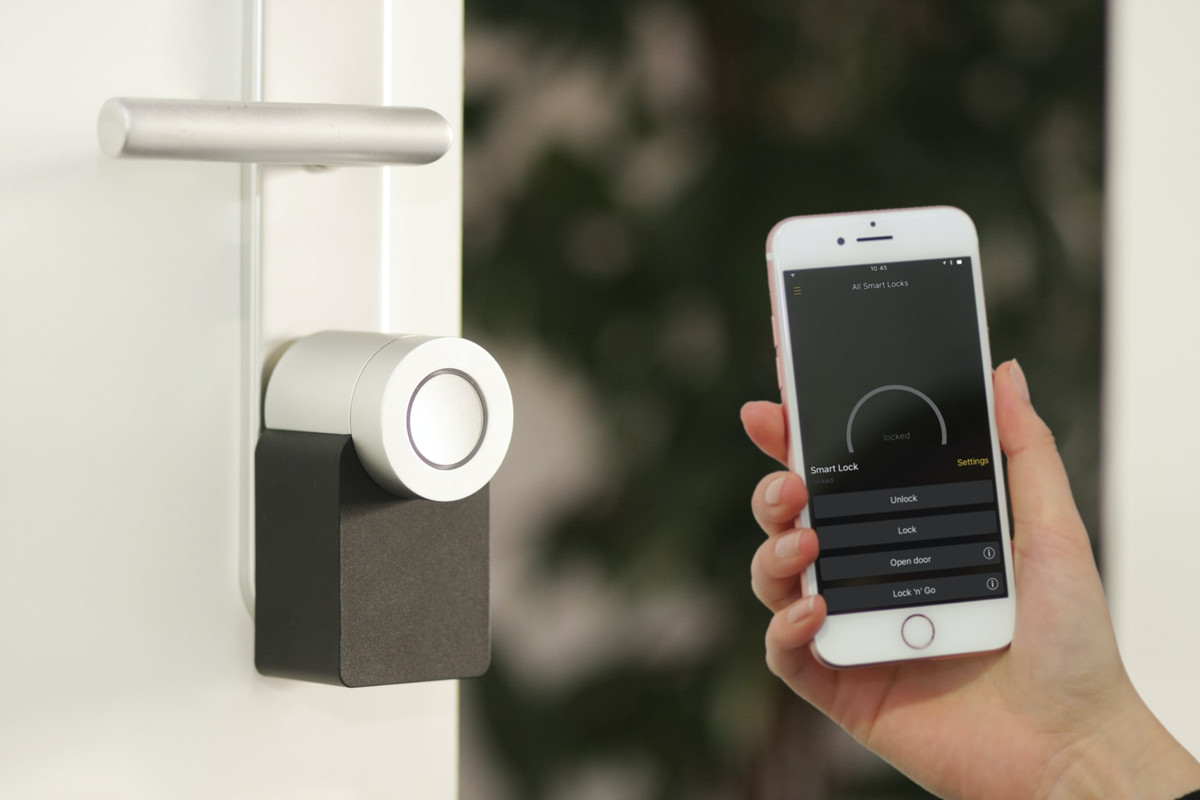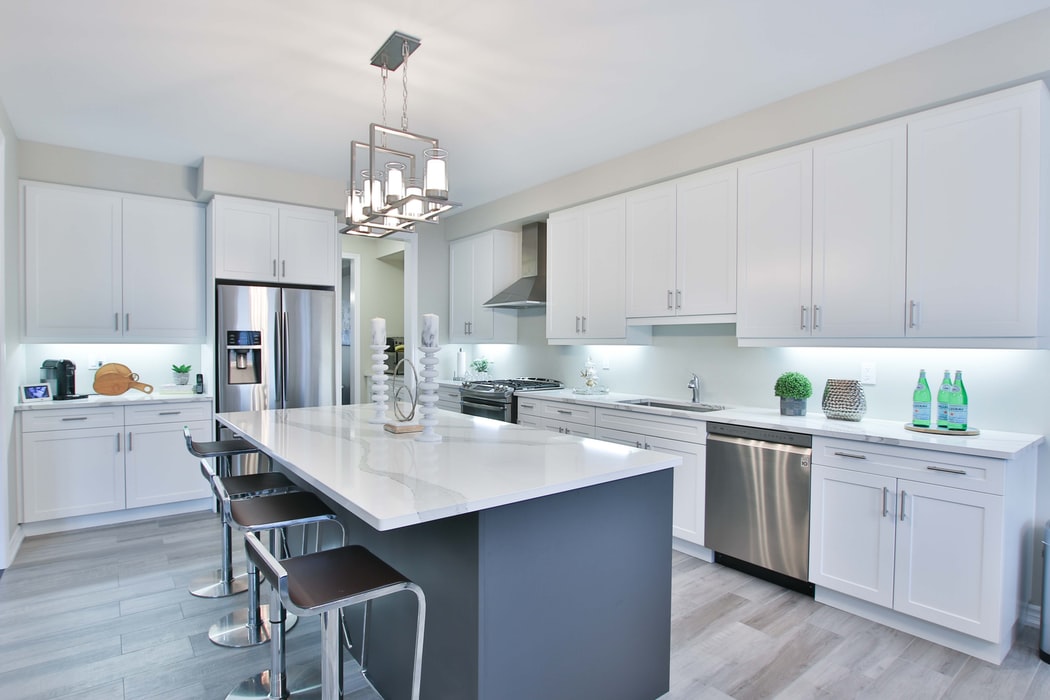Imagine waking up like this: soft lighting slowly fills your room, reminiscent of a beach sunrise. Relaxing nature sounds fade in through your speakers: crickets chirp, streams bubble, and trees sway. The lights begin to glow as you rise out of bed, and your bedroom door unlocks before you step into your fuzzy slippers.
Does that sound like an opening scene straight out of a science fiction movie? Well, it’s not—scenes like this can happen every day for homeowners who implement smart home technology into their living spaces.

Smart home technology—also known as home automation—is any device or gadget that works automatically to keep your home safer and more comfortable. In this article, readers will learn all about what home automation is, how it can improve security, how it can make every day more comfortable, and the requirements users will want to meet before their devices are live.
Are you considering implementing smart home technology into your home? Start your journey here.
What Makes Smart Home Tech So “Smart”?
There are important differences between a contemporary smart lock and an old-fashioned deadbolt. A deadbolt, well, can lock your door when you remember to use your key. A smart lock can fasten automatically, can “tell” your garage door to close as you leave for work, and can “learn” the days you tend to forget to lock up.
Just like the trusty smart lock, smart technology is primarily defined by its ability to function automatically. The majority of smart home technology contains three technological features: automation, Internet of Things (IoT) connectivity, and Artificial Intelligence (AI) capability.
Automation
When a homeowner envisions smart home technology, they tend to think of automation first. Simply put, automation is work that happens in the background. When a device is automated, it has been programmed to perform a given function without being asked to.
To use a classic sci-fi example, a coffee maker that brews a pot of dark roast every morning at 7:30 would be automated. You didn’t have to ask the coffee to be brewed, you didn’t flip a switch or schedule a reminder, it brewed your coffee at 7:30 AM because it was programmed to.
Putting the coffee maker aside, automation can be scaled to all kinds of security and domestic devices throughout the home. Lighting can be automated to wake you up in the morning or to fade out slowly around bedtime. Entryway sensors can arm when you leave for work, and turn off around the time you return. Think about your day-to-day chores: locking this, switching off that. Many of these chores can be implemented thanks to smart home automation.
Now I know what you’re thinking: what if I change my mind about an automation schedule? Many automated devices can be easily re-programmed with a smartphone app, website portal, or even a voice command, with no coding necessary.
IoT Connectivity

The Internet of Things is the multi-branching world of online, cloud-connected devices. When a device is IoT compatible, that means the device can find other devices, be found by other devices, and send and receive information to these devices.
IoT devices usually communicate over radio wave formats, known as “protocols”. If a device is IoT compatible, it may use a familiar protocol such as Wi-Fi or Bluetooth, or a less familiar protocol, such as Z-Wave or Zigbee.
So, let’s say your home is chock-full of IoT-compatible, smart home technology that is programmed around your lifestyle. It’s Friday afternoon, and you’re about to head out for your weekly round of golf. Already pulling out of your driveway, you open an app on your smartphone and tell it that your home is now empty. First, your mobile app sends a signal to your smart home hub. Your smart home hub then tells the appropriate smart home devices to follow unique directions. The hub might tell your lights to turn off, your thermostat to warm, your locks to turn, your entryway monitors to arm, and your garage door to close.
With IoT compatibility, your smart home devices can “speak” to each other, making your to-do list even shorter.
AI Learning
Smart home devices that use Artificial Intelligence can “learn” to make themselves more useful.
Although the form and function can change from device to device, technology with AI capabilities track, store, and interpret data to inform changes in functioning. The more a device is used, the more data the device can store. This stored information forms the basis for the device to change functional behaviors: when the device should turn off, what tasks it performs while running, under which circumstances should it switch up its typical schedule, and more.
To give a clearer example, let’s talk about the thermostat. A smart thermostat with AI functionality will track multiple data points such as when you turn the system on or off, how often you change the temperature, and which temperatures you like best depending on the season. This same thermostat can then make adjustments based on your habits. Going to bed? The thermostat will lower the temperature a hair. Heading out? The thermostat will shut off to conserve energy.
AI allows smart technology to customize itself to your tastes and preferences, all without you having to request a single change.
Smart Home Technology Tightens Up Home Security

Smart home technology can improve the security of any living space. Here’s how:
Automate from a Distance
With smart home technology, you can ensure your home is armed and locked up tight even when you’re hundreds of miles away.
Heading out on vacation? Many smart home companies offer a mobile app to monitor your smart home equipment from anywhere. If you’re beachside when you suddenly remember you forgot to lock the back door, you can activate your smart locks without even setting down your cocktail.
If you have workers servicing your home later in the day, but you’re away and don’t want to keep your home unlocked, you can easily arm and re-arm most security systems with your mobile app.
Monitor from Anywhere
Want to see what’s going on in and around your home from anywhere? Smart home technology can give you that power.
Connect to smart outdoor, indoor, and doorbell cameras to catch live video of your home anytime. Check on your kids or pets, see who’s at the front door, and monitor your yard for pesky critters or mischievous teens.
Smart security goes beyond cameras. Homeowners with smart entryway sensors can audit how often a room is entered and can alert emergency services if a room is entered while no one is supposed to be home.
Learn and Adjust
Thanks to AI, smart home technology can improve and protect while you’re away.
Motion trackers in your home can learn and track what kinds of people normally move about: parents, kids, and pets. If an unfamiliar form moves at an unfamiliar time of day, you or emergency services can be notified.
If you leave for a work trip, AI can alter the patterning of your smart lights to make it appear as if someone is still home.
Smart Home Technology Makes Home Life Easier
It’s not just about security—smart home technology can make your home, apartment, or condo an easier and more comfortable place to live.
With hundreds of third-party smart products on the market, the automated gadgets and gizmos can sometimes feel endless and downright silly (we’re looking at you, automatic coffee maker). When it comes to making your life easier, here’s how smart tech can cover the basics:
Automate Your Schedule
It’s much more than just a wake-up alarm: smart technology can help you orient your entire schedule.
In the morning, smart lights can dim on to make your morning wake-up nice and gradual. Third-party audio devices can read you the weather, tell you your schedule, or play your favorite song. Your smart thermostat can warm a few degrees, now that you’re up and moving.

As you leave in the early afternoon, smart locks can engage and your integrated security system can arm entryway sensors, motion sensors, and security cameras. If you’re expecting a package, you can check your doorbell camera feed to see if the mail arrived as expected.
When you get home, the smart lighting and thermostat can automatically re-engage, while the security system disarms.
When you’re ready for bed, the thermostat can drop a few degrees, the lights can warm, and the security system can arm again.
Save Money
When you’re not home, you can save hundreds of dollars a year on energy costs with smart lighting fixtures and thermostats. Your smart system can recognize when the house is empty, killing lights and setting the thermostat to a lower energy consumption setting.
Requirements and Installation of Smart Tech
If you think you’re ready to purchase smart technology, you’ll first want to check off a few prerequisites.
Requirements
Most smart home technology requires some form of radio or cellular connectivity to work properly. Many homeowners opt to connect their smart tech to a wireless home Wi-Fi network, but there are other options for consumers who want to go a different route.
Although it is not a requirement, owning a smartphone or tablet can be a big help when controlling your smart technology. It’s quite common for smart tech to be primarily controlled via a mobile or tablet application. To take your automation on the go, a smart device is a bonus.

Installation
Most smart home vendors sell two types of smart home technology: professionally installed and Do It Yourself (DIY). Professionally installed smart tech can make a complex system easier to get up and running. A DIY system can make securing a space more customizable and it may be more affordable.
Keep in mind that every security retailer provides its own unique products with its own unique requirements. When in doubt, always check with your security retailer directly to ensure you can get your smart home technology up and running on day one.
Shop for Smart Home and Security Systems Today!
Ready to get smart? Check out our list of the top smart home companies and home security vendors to access special promotions, grab sweet deals, and get your home automation up and running in no time.






